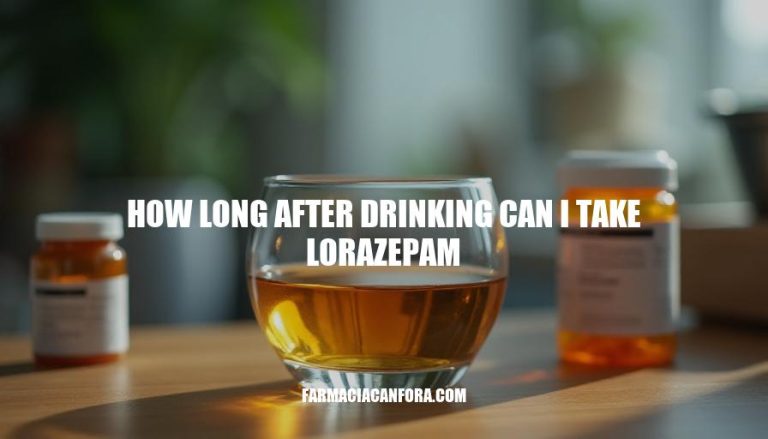


Navigating the safe use of medications like lorazepam is crucial, especially when considering the interplay with substances like alcohol. This article aims to demystify the complexities surrounding the timeframe in which it is safe to take lorazepam after consuming alcohol. Grasping this information is vital not only for preventing adverse reactions but also for ensuring the efficacy of the medication and maintaining overall health.
By exploring the interactions and recommended guidelines, readers can make informed decisions and minimize potential risks.
The time one should wait before taking lorazepam after drinking alcohol depends on several factors:
Metabolism: Individual metabolic rates vary, affecting how quickly alcohol is processed. Factors like age, gender, and genetic makeup influence metabolism.
Quantity of Alcohol Consumed: The amount of alcohol ingested plays a significant role. Larger quantities take longer to be metabolized.
Individual Health Conditions: Conditions like liver disease can slow alcohol metabolism.
Other health issues, such as heart conditions, can also impact how the body handles both alcohol and lorazepam.
Body Weight and Composition: Heavier individuals or those with more body fat may metabolize alcohol more slowly.
Rate of Consumption: Drinking alcohol quickly can overwhelm the body’s ability to metabolize it efficiently, leading to higher blood alcohol levels for longer periods.
Medication Interactions: Other medications being taken can affect how both alcohol and lorazepam are metabolized.
Given these factors, it’s crucial to consult a healthcare provider for personalized advice.
It is recommended to wait at least 24 hours after taking lorazepam before consuming alcohol. This allows sufficient time for the medication to be cleared from your bloodstream. Combining lorazepam and alcohol can intensify side effects such as drowsiness, dizziness, slowed breathing, and even risk of overdose.
It is best to avoid alcohol while taking lorazepam to prevent these potentially dangerous interactions.
Mixing alcohol and lorazepam can lead to severe health risks and side effects due to their combined depressant effects on the central nervous system. Potential risks include extreme drowsiness, difficulty breathing, dizziness, slowed heart rate, slurred speech, vomiting, low body temperature, impaired coordination and memory, blackouts, unusual behavior, delusions, mania, dangerous mood swings, suicidal ideation, loss of consciousness, respiratory arrest, seizures, increased risk of overdose, coma, and death.
The liver struggles to filter both substances simultaneously, heightening the risk of accidental overdose. It takes the body up to five days to clear a dose of lorazepam from its system, making it crucial to avoid alcohol during this period to prevent life-threatening consequences.
Following the recommended waiting period helps mitigate these risks and ensures safer use of lorazepam.
Extreme drowsiness
Difficulty breathing
Dizziness
Slowed heart rate
Confusion
Agitation
Hallucinations
Seizures
Coma
Seek medical help immediately if you experience any of these symptoms.
It’s crucial to understand the factors that influence the timeframe for safe use of lorazepam after consuming alcohol. These factors include metabolism, quantity of alcohol consumed, individual health conditions, body weight and composition, rate of consumption, and medication interactions.
Given these complexities, consulting a healthcare provider for personalized advice is essential.
The recommended waiting period before taking lorazepam after drinking alcohol is at least 24 hours, allowing sufficient time for the medication to be cleared from your bloodstream.
Combining lorazepam and alcohol can intensify side effects and lead to severe health risks, including extreme drowsiness, difficulty breathing, dizziness, slowed heart rate, and even risk of overdose.
The liver struggles to filter both substances simultaneously, heightening the risk of accidental overdose. It takes the body up to five days to clear a dose of lorazepam from its system, making it crucial to avoid alcohol during this period to prevent life-threatening consequences.
Following the recommended waiting period helps mitigate these risks and ensures safer use of lorazepam.